Jaguar F-Pace vs Nissan X-Trail – Which one offers the better deal?
Everyday use, family trips or long-distance drives – here’s where the differences show.
Discover whether Jaguar F-Pace or Nissan X-Trail fits your lifestyle better.
Costs and Efficiency:
When it comes to price and running costs, the biggest differences usually appear. This is often where you see which car fits your budget better in the long run.
Nissan X-Trail has a significantly advantage in terms of price – it starts at 34000 £, while the Jaguar F-Pace costs 56400 £. That’s a price difference of around 22372 £.
Fuel consumption also shows a difference: Jaguar F-Pace manages with 1.80 L and is therefore clearly more efficient than the Nissan X-Trail with 5.70 L. The difference is about 3.90 L per 100 km.
Engine and Performance:
Power, torque and acceleration say a lot about how a car feels on the road. This is where you see which model delivers more driving dynamics.
When it comes to engine power, the Jaguar F-Pace has a convincingly edge – offering 575 HP compared to 213 HP. That’s roughly 362 HP more horsepower.
In acceleration from 0 to 100 km/h, the Jaguar F-Pace is convincingly quicker – completing the sprint in 4 s, while the Nissan X-Trail takes 7 s. That’s about 3 s faster.
In terms of top speed, the Jaguar F-Pace performs noticeable better – reaching 286 km/h, while the Nissan X-Trail tops out at 200 km/h. The difference is around 86 km/h.
There’s also a difference in torque: Jaguar F-Pace pulls clearly perceptible stronger with 700 Nm compared to 525 Nm. That’s about 175 Nm difference.
Space and Everyday Use:
Cabin size, boot volume and payload all play a role in everyday practicality. Here, comfort and flexibility make the difference.
Seats: Nissan X-Trail offers distinct more seating capacity – 7 vs 5.
In curb weight, Nissan X-Trail is to a small extent lighter – 1668 kg compared to 1951 kg. The difference is around 283 kg.
In terms of boot space, the Nissan X-Trail offers slightly more room – 585 L compared to 470 L. That’s a difference of about 115 L.
In maximum load capacity, the Jaguar F-Pace performs barely noticeable better – up to 1428 L, which is about 4 L more than the Nissan X-Trail.
When it comes to payload, Jaguar F-Pace barely noticeable takes the win – 589 kg compared to 574 kg. That’s a difference of about 15 kg.
Who wins the race?
The Jaguar F-Pace proves to be dominates this comparison and therefore becomes our DriveDuel Champion!
Jaguar F-Pace is the better all-rounder in this comparison.
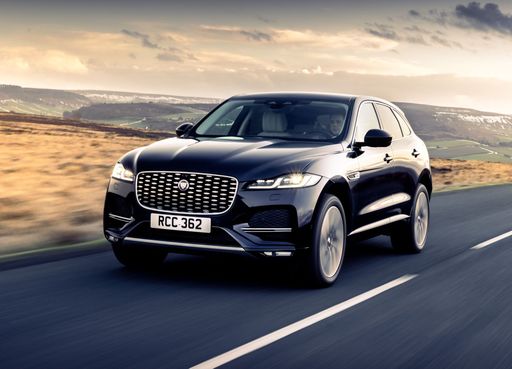
Jaguar F-Pace
Jaguar F-Pace
The Jaguar F-Pace effortlessly combines luxury and performance, offering an exceptional driving experience. Its sleek design is complemented by a refined interior that ensures comfort even on the longest journeys. With advanced technology features, the F-Pace remains at the forefront of innovation, making it a standout choice in the SUV segment.
details @ media.jaguar.com
@ media.jaguar.com
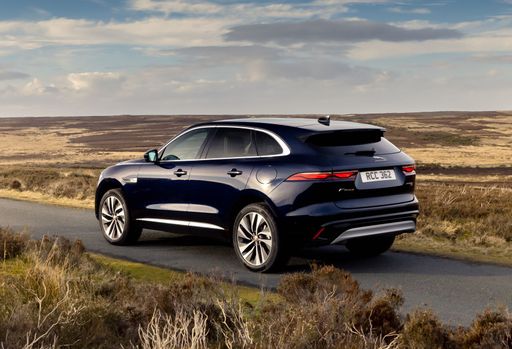 @ media.jaguar.com
@ media.jaguar.com
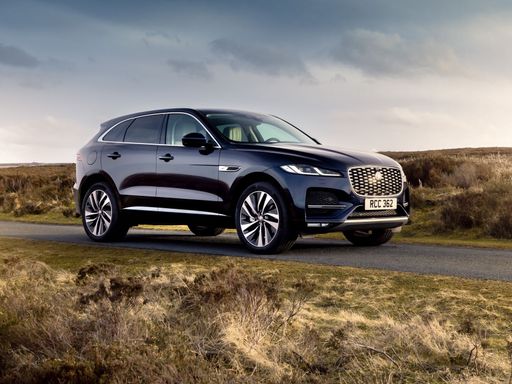 @ media.jaguar.com
@ media.jaguar.com
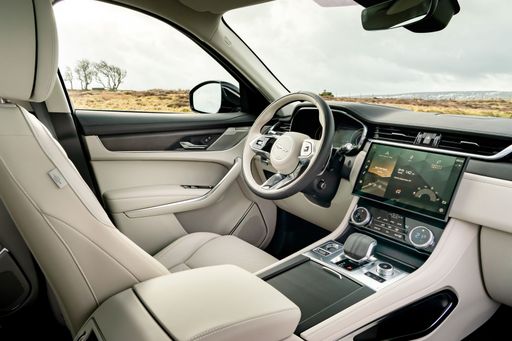 @ media.jaguar.com
@ media.jaguar.com
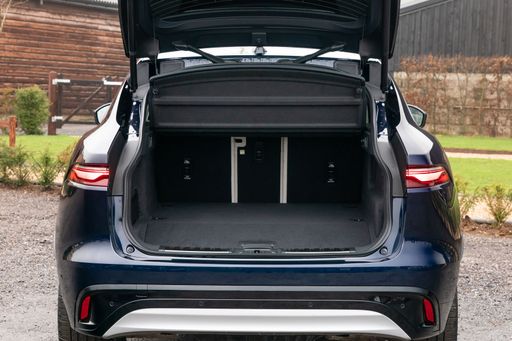 @ media.jaguar.com
@ media.jaguar.com
Nissan X-Trail
The Nissan X-Trail stands out with its spacious interior and practical design, making it an ideal choice for families and adventure enthusiasts alike. Its sleek exterior styling is complemented by modern technology features that enhance both driving pleasure and safety. This versatile SUV offers a comfortable ride, whether navigating city streets or exploring off-road paths, ensuring you travel in style and comfort.
details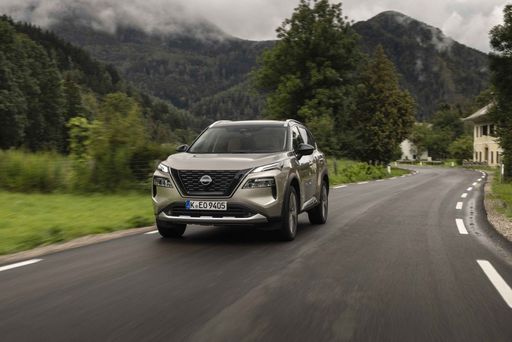 @ germany.nissannews.com
@ germany.nissannews.com
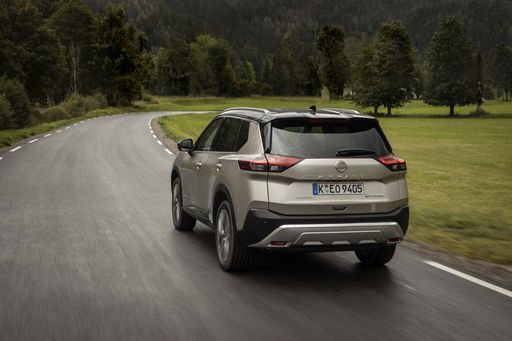 @ germany.nissannews.com
@ germany.nissannews.com
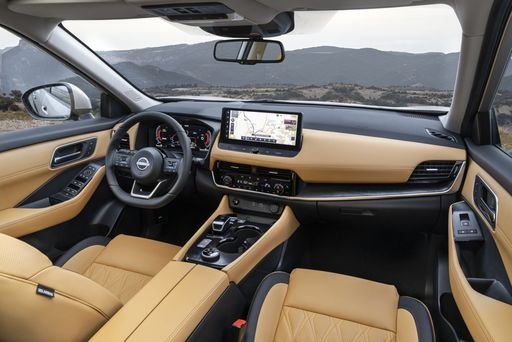 @ germany.nissannews.com
@ germany.nissannews.com
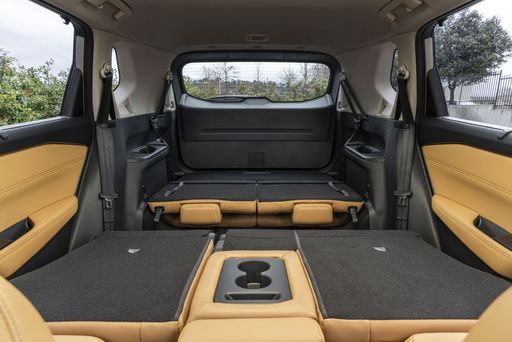 @ germany.nissannews.com
@ germany.nissannews.com

|

|
|
|
|
Costs and Consumption |
|
|---|---|
|
Price
56400 - 100800 £
|
Price
34000 - 50400 £
|
|
Consumption L/100km
1.8 - 12 L
|
Consumption L/100km
5.7 - 6.9 L
|
|
Consumption kWh/100km
-
|
Consumption kWh/100km
-
|
|
Electric Range
64 km
|
Electric Range
-
|
|
Battery Capacity
15.40 kWh
|
Battery Capacity
-
|
|
co2
41 - 274 g/km
|
co2
131 - 161 g/km
|
|
Fuel tank capacity
62 - 83 L
|
Fuel tank capacity
55 L
|
Dimensions and Body |
|
|---|---|
|
Body Type
SUV
|
Body Type
SUV
|
|
Seats
5
|
Seats
5 - 7
|
|
Doors
5
|
Doors
5
|
|
Curb weight
1951 - 2230 kg
|
Curb weight
1668 - 1961 kg
|
|
Trunk capacity
354 - 470 L
|
Trunk capacity
177 - 585 L
|
|
Length
4747 - 4762 mm
|
Length
4680 mm
|
|
Width
1936 mm
|
Width
1840 mm
|
|
Height
1664 - 1670 mm
|
Height
1720 mm
|
|
Max trunk capacity
1299 - 1428 L
|
Max trunk capacity
1396 - 1424 L
|
|
Payload
457 - 589 kg
|
Payload
432 - 574 kg
|
Engine and Performance |
|
|---|---|
|
Engine Type
Diesel MHEV, Petrol MHEV, Plugin Hybrid, Petrol
|
Engine Type
Petrol MHEV, Full Hybrid
|
|
Transmission
Automatic
|
Transmission
Automatic
|
|
Transmission Detail
Automatic Gearbox
|
Transmission Detail
CVT, Reduction Gearbox
|
|
Drive Type
All-Wheel Drive
|
Drive Type
Front-Wheel Drive, All-Wheel Drive
|
|
Power HP
163 - 575 HP
|
Power HP
163 - 213 HP
|
|
Acceleration 0-100km/h
4 - 10.1 s
|
Acceleration 0-100km/h
7 - 9.6 s
|
|
Max Speed
195 - 286 km/h
|
Max Speed
170 - 200 km/h
|
|
Torque
380 - 700 Nm
|
Torque
300 - 525 Nm
|
|
Number of Cylinders
4 - 8
|
Number of Cylinders
3
|
|
Power kW
120 - 423 kW
|
Power kW
120 - 157 kW
|
|
Engine capacity
1997 - 5000 cm3
|
Engine capacity
1497 cm3
|
General |
|
|---|---|
|
Model Year
2024
|
Model Year
2024
|
|
CO2 Efficiency Class
G, B
|
CO2 Efficiency Class
F, D, E
|
|
Brand
Jaguar
|
Brand
Nissan
|
What drive types are available for the Jaguar F-Pace?
Available configurations include All-Wheel Drive.
The prices and data displayed are estimates based on German list prices and may vary by country. This information is not legally binding.
